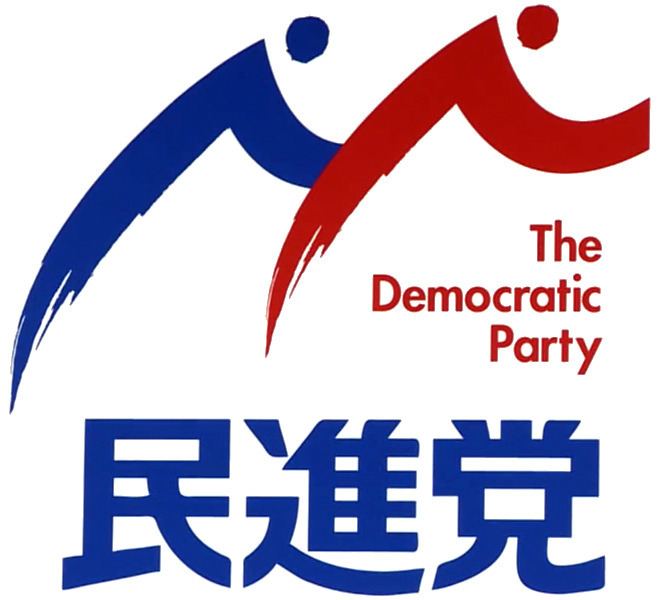Japanese name Minshintō Secretary-General Yoshihiko Noda | President Renhō | |
 | ||
Founded 27 March 2016; 11 months ago (2016-03-27) Merger of Democratic Party of Japan
Japan Innovation Party Headquarters Nagatachō, Chiyoda, Tokyo, Japan | ||
The Democratic Party (民進党, Minshintō), abbreviated as DP, is the main opposition political party in Japan. The party was founded on 27 March 2016 from the merger of the Democratic Party of Japan and the Japan Innovation Party.
Contents
Etymology
The party's Japanese name Minshintō combines "min" from minshu ("democratic") and shin (進, "advance, progress"), not shin (新, "new") from ishin (innovation).
Foundation
On 24 February 2016 the Democratic Party of Japan (DPJ) and the Japan Innovation Party (JIP) announced that they were to merge at a special convention on 27 March to form a new opposition party in order to better compete with the ruling Liberal Democratic Party (LDP) in an Upper House election that was scheduled for later the same year. On 4 March 2016, the DPJ and JIP asked the public for suggestions for a name for the merged party. On 14 March 2016, the name of the new party was announced as Minshintō (Democratic Progressive Party), the most popular shortlisted name among polled voters and preferred by the JIP, beating Rikken Minshutō (Constitutional Democratic Party) that was preferred by the DPJ. On 18 March 2016, the official English language title of the new party was announced as the Democratic Party. On 22 March, the DPJ announced that 4 sitting Representatives from Vision of Reform would join the party at its launch.
The new party was founded on 27 March 2016 with the leadership consisting of Katsuya Okada as party president, Yukio Edano as secretary-general and Shiori Yamao as policy chief. The party platform committed to protecting the existing pacifist Japanese constitution, and stating opposition to the 'Abenomics' policies of Prime Minister Shinzō Abe.
2016 House of Councillors election
The election on 10 July 2016 was the first major election contested by the new party. Following the merger, the party entered the election with 62 seats in the 242-seat House, with 45 of those 62 seats being contested. During the nomination period, the party signed an agreement with the Japanese Communist Party (JCP), Social Democratic Party and People's Life Party to field a jointly-endorsed candidate in each of the 32 districts in which only one seat is contested, uniting in an attempt to take control of the House from the ruling LDP–Komeito coalition. Despite the agreement, Democratic Party leader Okada stated that forming a coalition government with the JCP would be "impossible" in the near future due to some of the "extreme leftist policies" promoted by the JCP.
The party had a total of 55 official candidates contesting the election, the same number as the DPJ in the 2013 election and the third-most behind the LDP and Communist Party. 33 candidates contested the single- and multi-member districts and 22 were in the party's list for the 48-seat national proportional representation block. A further 15 independent candidates contesting single-seat districts were endorsed by the party. The party suffered a considerable defeat at the hands of the ruling coalition, losing 13 seats overall. Five of the 15 endorsed independents were also elected, including two that claimed seats formerly held by retiring Democratic Party members. Following the loss, Okada announced he would not seek re-election as leader at the party's annual meeting in September.
Factions
The Democratic Party, like its predecessor Democratic Party of Japan, is composed of factions originating in the Liberal Democratic Party, Japan Socialist Party and the Democratic Socialist Party, augmented by the merger with the Japan Innovation Party. Significant factions existing within the party include:
